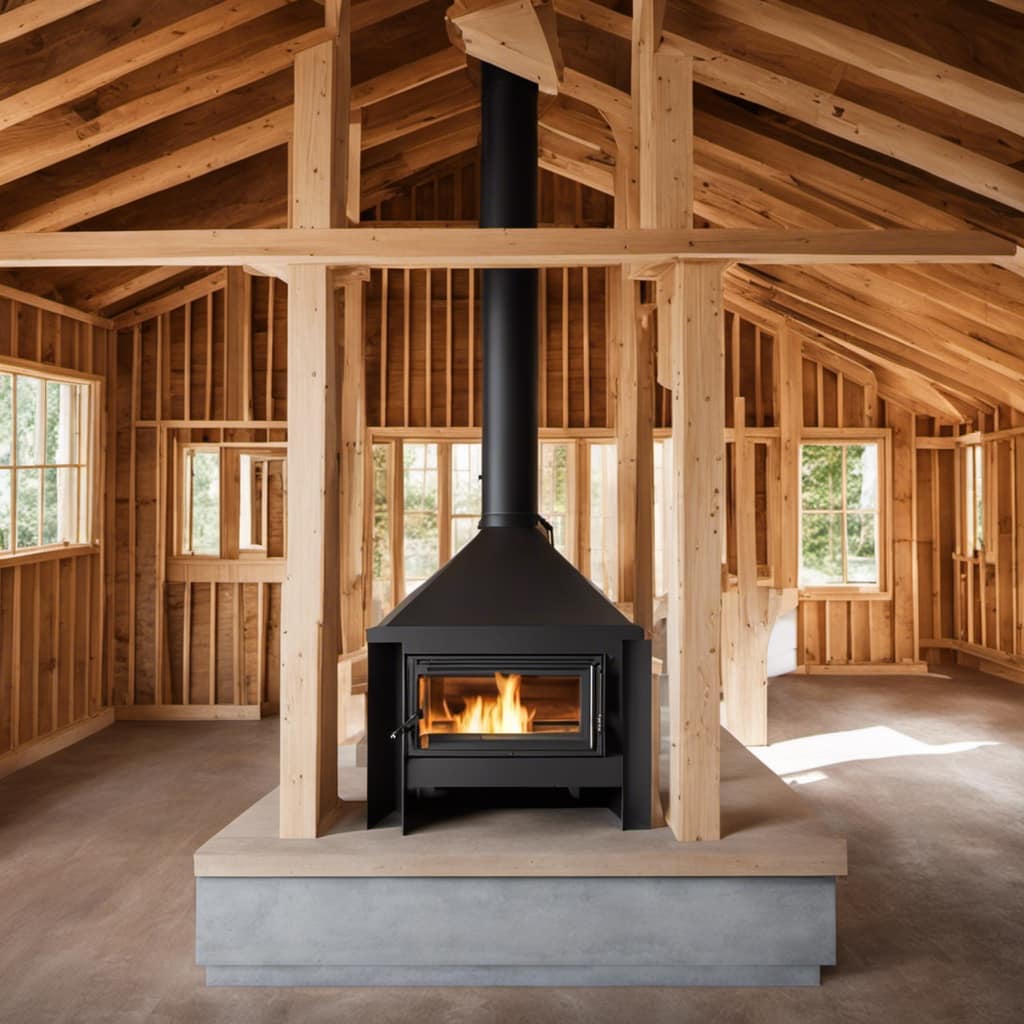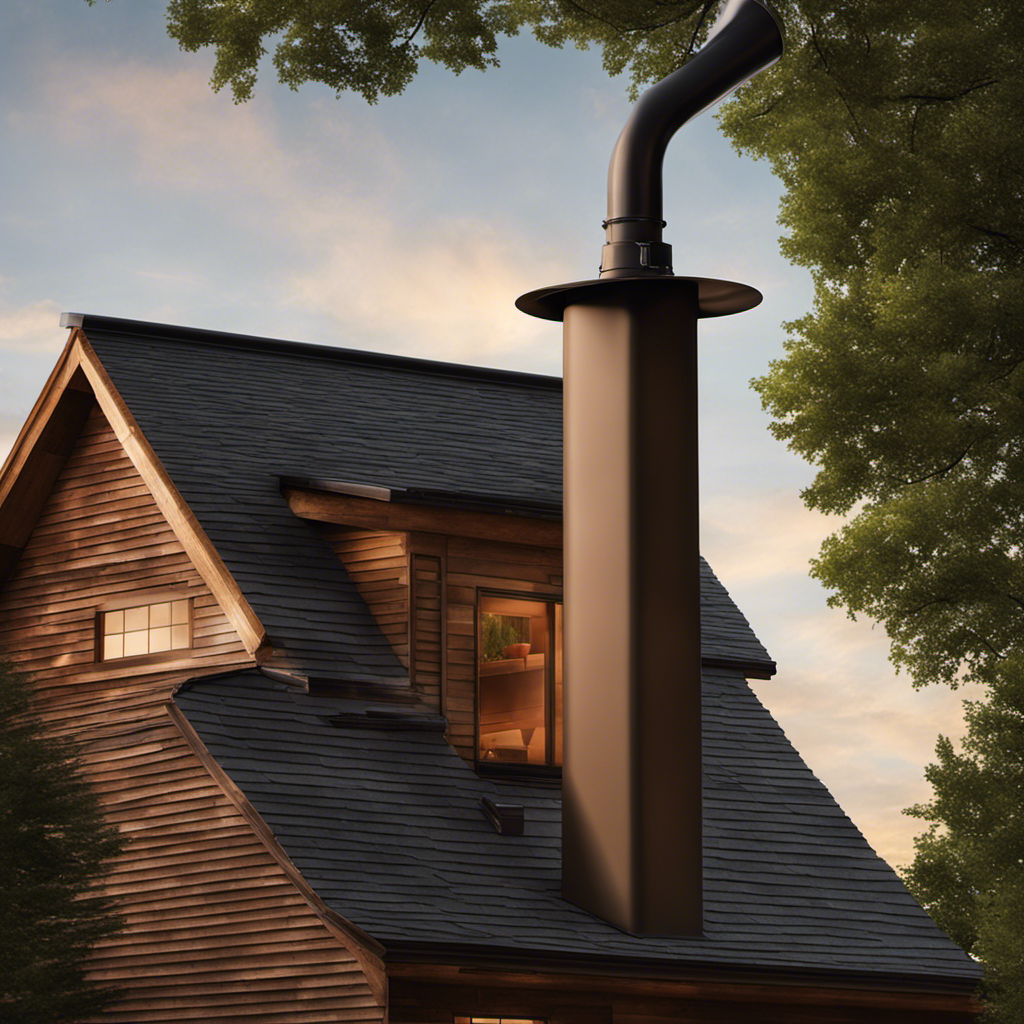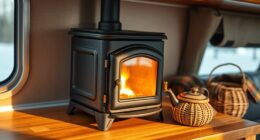As I stand in front of the flickering flames, I truly appreciate the comfort and warmth they provide.
Building an outside wood stove to heat your home may seem daunting, but with the right knowledge and tools, it can be a rewarding project.
In this article, I will guide you through the process step by step, from choosing the perfect location to installing the necessary ventilation system.
Get ready to create a cozy haven for your family with your very own outside wood stove.

Key Takeaways
- Select hardwoods like oak, maple, or birch for high energy content and slow burn rate.
- Use firebricks for interior lining of stove for proper insulation and heat retention.
- Level the ground and lay concrete blocks in a pattern for sufficient support.
- Install a vertical chimney that extends above the highest point of the roof.
Choosing the Right Location for Your Outside Wood Stove
Where should I position my outside wood stove for optimal heating efficiency?
When it comes to outdoor wood stove safety and maximizing heating efficiency, proper placement is crucial. Firstly, choose a location away from combustible materials, such as fences or overhanging branches, to reduce the risk of fire.
Secondly, consider the direction of prevailing winds to prevent smoke from blowing towards your home or neighboring properties.
Additionally, ensure that the stove is placed on a stable, level surface, preferably on a non-combustible material like concrete or gravel. This will prevent any instability or fire hazards.
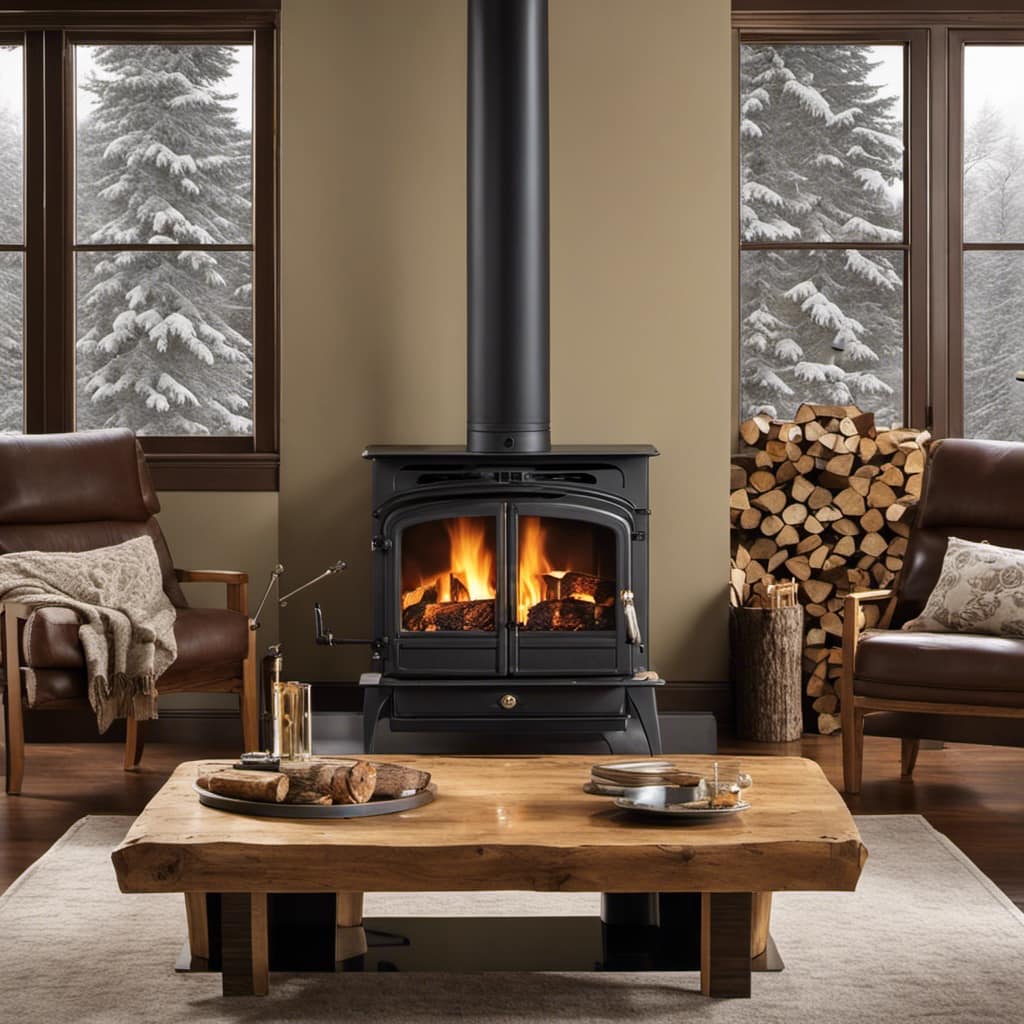
Lastly, remember to keep the stove accessible for maintenance and cleaning purposes.
Gathering the Necessary Materials and Tools
I’ve gathered all the necessary materials and tools, so now I’m ready to start building my outside wood stove. Before I begin, it’s crucial to select the ideal wood for my stove. Hardwoods such as oak, maple, and birch are excellent choices due to their high energy content and slow burn rate. Softwoods like pine and spruce are less efficient but can still be used as long as they are well-seasoned.
To ensure proper insulation and maximum heat efficiency, I will be using firebricks as the interior lining of my stove. Firebricks have excellent heat retention properties and can withstand high temperatures. Additionally, I will be using high-temperature insulation materials such as ceramic fiber blanket and vermiculite to further enhance heat retention and prevent heat loss.
By carefully selecting the right wood and ensuring proper insulation, I can maximize the heat output of my outside wood stove and efficiently heat my home.

| Wood Type | Energy Content (BTU/cord) |
|---|---|
| Oak | 24 million |
| Maple | 23 million |
| Birch | 22 million |
Building the Base and Foundation for Your Outside Wood Stove
Before I can start assembling the rest of my outside wood stove, I need to carefully construct a solid base and foundation using concrete blocks and mortar. This is a crucial step in ensuring the stability and longevity of the stove.
Firstly, I must level the ground where the stove will be placed. This involves removing any debris or uneven surfaces to create a flat and stable foundation.
Next, I’ll lay concrete blocks in a pattern that provides sufficient support for the stove. It’s important to ensure that the blocks are level and securely in place.
Once the blocks are in position, I’ll use mortar to secure them together, creating a solid base. Additionally, to improve insulation and prevent heat loss, I’ll insulate the base with a layer of firebrick or refractory cement. This will help to maximize the efficiency of the wood stove and reduce energy waste.
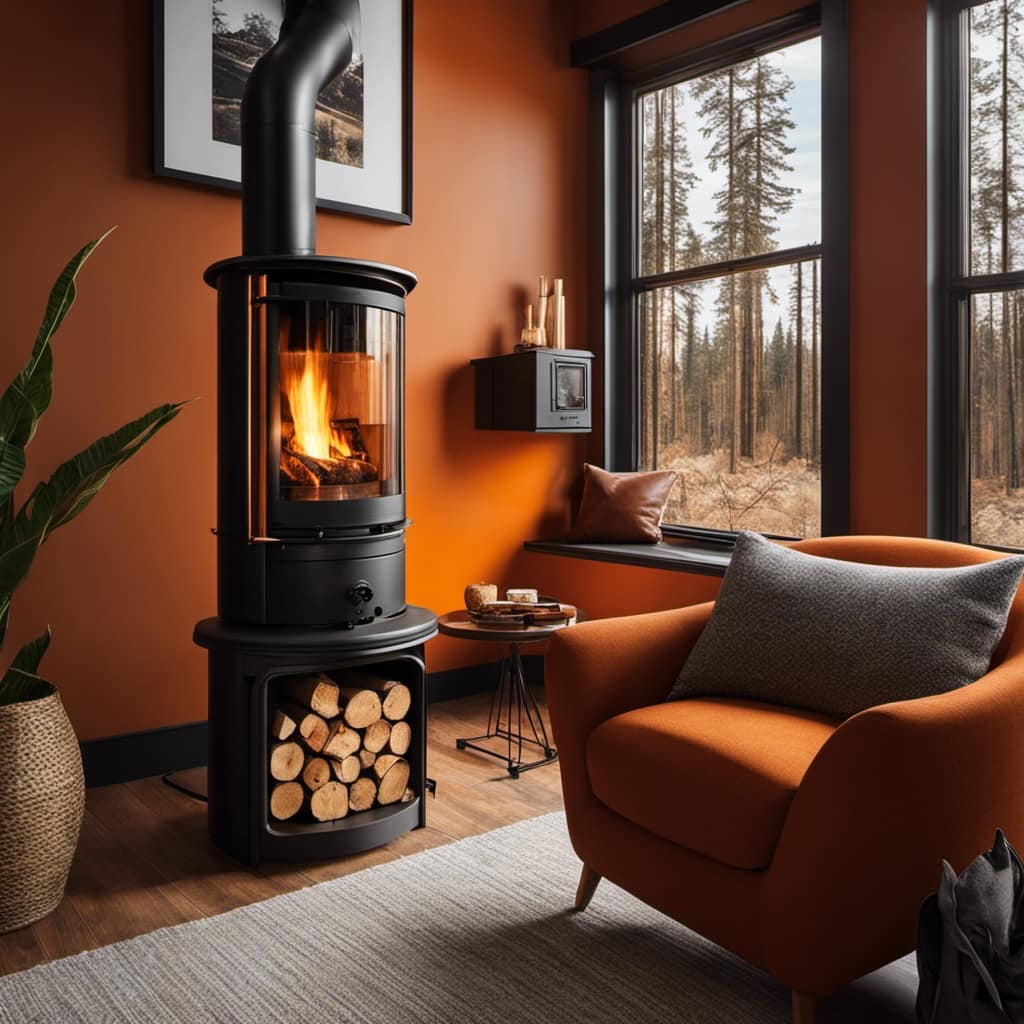
Overall, constructing a solid base and insulating it properly is essential for the successful installation and operation of an outside wood stove.
Creating the Firebox and Heat Exchanger System
I need to carefully design and construct both the firebox and heat exchanger system to ensure optimal heating efficiency. To achieve this, I’ll consider the following:
-
Size and Insulation: The firebox should be appropriately sized to accommodate the amount of wood you plan to burn. Insulating the firebox will help retain heat, maximizing its efficiency.
-
Airflow Control: Proper airflow is crucial for a well-functioning firebox. Designing vents or dampers that allow for precise control of the air intake will ensure efficient combustion.

-
Heat Exchanger Placement: Strategic placement of the heat exchanger within the stove is essential for effective heat transfer. It should be positioned in close proximity to the firebox to maximize heat absorption.
-
Material Selection: Choosing the right materials for both the firebox and heat exchanger is crucial for durability and heat transfer. High-quality steel or cast iron are commonly used for their excellent heat conductivity.
Installing the Chimney and Ventilation System
To ensure proper ventilation, I’ll need to install a chimney and connect it to a ventilation system. When designing the chimney layout, it’s crucial to consider factors such as the stove’s location, height, and the distance from any combustible materials.
The chimney should be vertical and extend above the highest point of the roof to prevent downdrafts. It’s important to choose the appropriate ventilation system to efficiently remove smoke and gases. Options include natural draft, power vent, or forced draft systems.
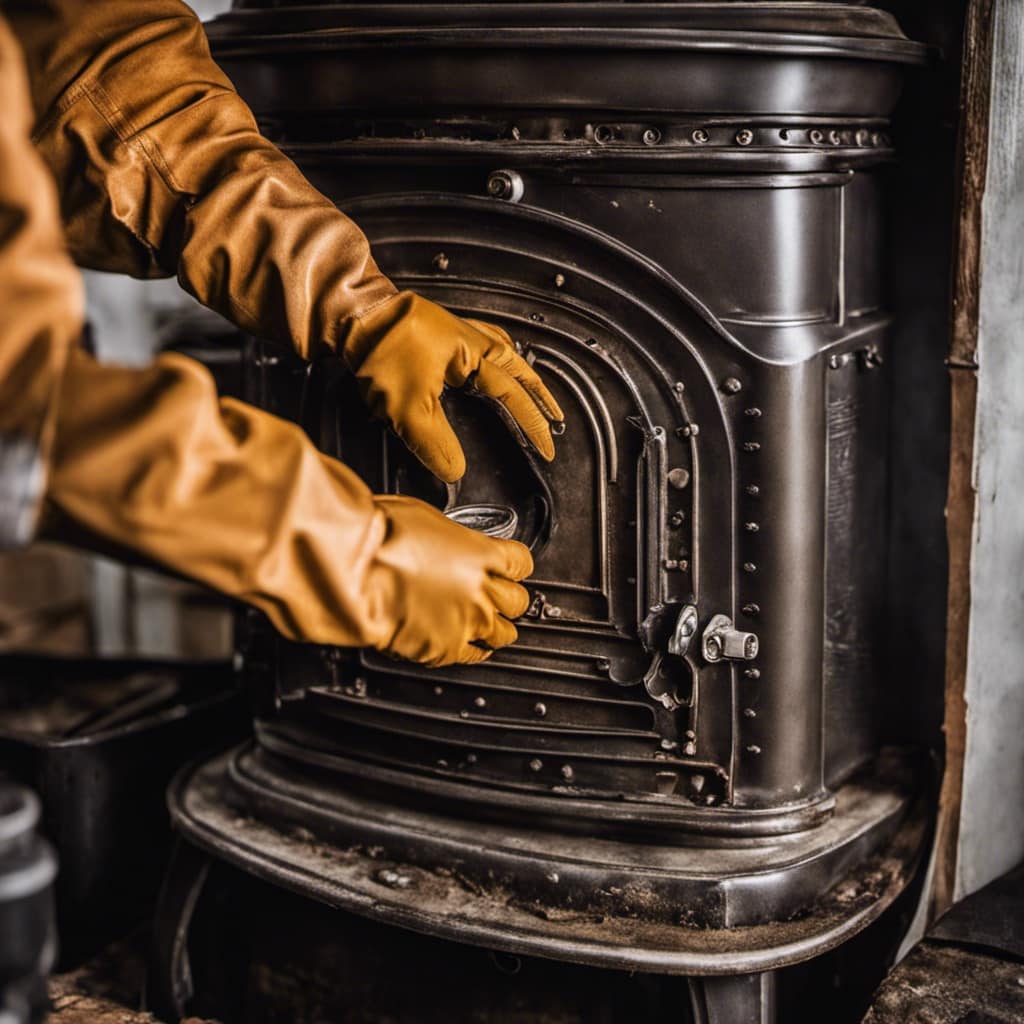
Natural draft relies on the temperature difference between the inside and outside of the chimney, while power vent and forced draft systems use fans to enhance airflow. Properly designing the chimney layout and selecting the right ventilation system will ensure optimal performance and safety of your outside wood stove.
Frequently Asked Questions
What Are the Safety Precautions to Take When Using an Outside Wood Stove to Heat Your Home?
When using an outside wood stove to heat your home, it is crucial to prioritize safety. Preventing accidents and ensuring fire safety should be your top concerns. Take necessary precautions to protect yourself and your property.
How Do You Properly Clean and Maintain an Outside Wood Stove?
To properly clean and maintain an outside wood stove, start by removing ashes and debris regularly. Check for any signs of damage or leaks, and address them promptly. Troubleshoot common issues like poor draft or uneven heat distribution.
Can an Outside Wood Stove Be Used as the Primary Heating Source for a Home?
Yes, an outside wood stove can be used as the primary heating source for a home. It is one of the alternative heating options that can be cost effective, providing warmth and comfort.
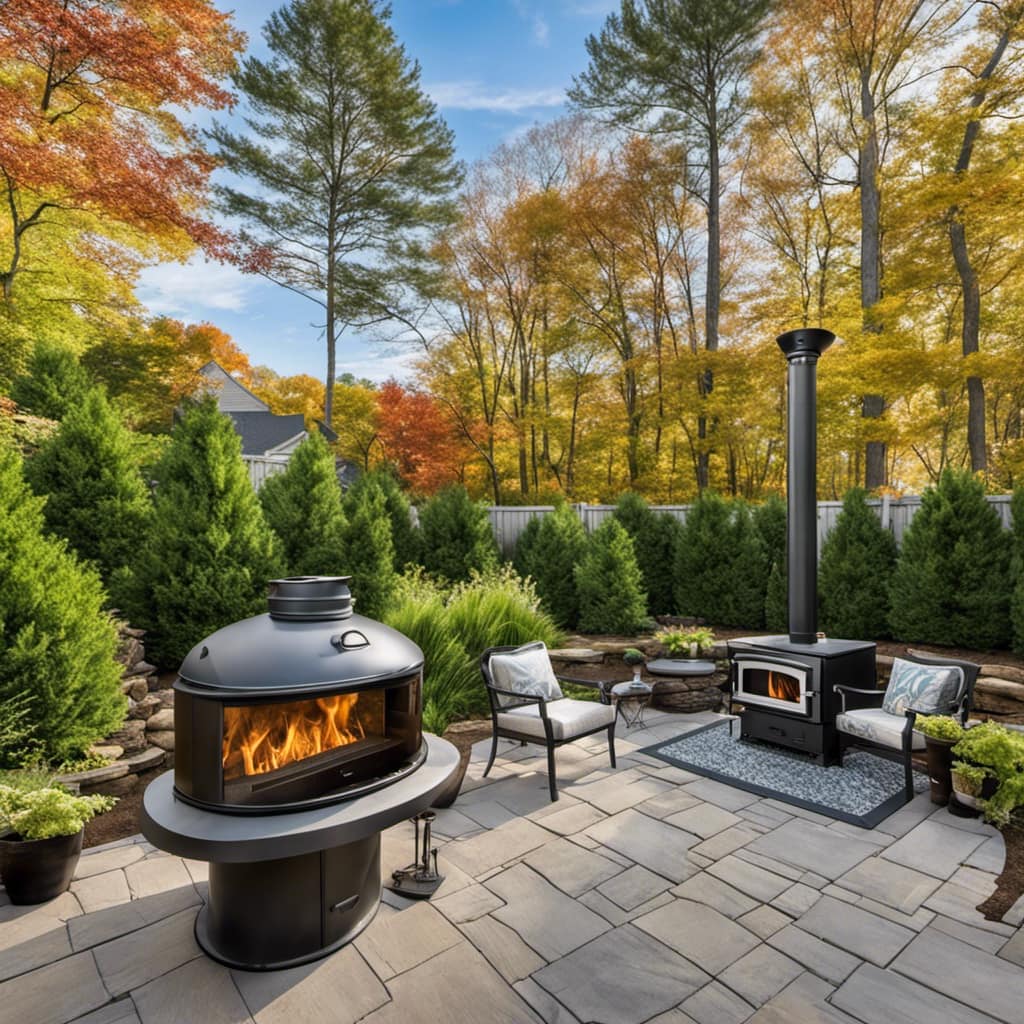
Are There Any Legal Requirements or Permits Needed for Installing an Outside Wood Stove?
There may be legal requirements and permits needed for installing an outside wood stove. It is important to research and comply with local regulations to ensure a safe and legal installation process. Safety precautions, regular cleaning and maintenance are also crucial. Additionally, consider efficiency comparison as it relates to using the stove as a primary heating source.
How Efficient Is an Outside Wood Stove Compared to Other Heating Options?
An outside wood stove can be a cost-effective heating option for your home. It has pros and cons compared to other options. Its efficiency depends on factors like insulation and wood quality.
Conclusion
In conclusion, building an outside wood stove can be a cost-effective and efficient way to heat your home.
Did you know that a well-designed wood stove can reach up to 80% efficiency, compared to only 15-30% efficiency for traditional fireplaces?
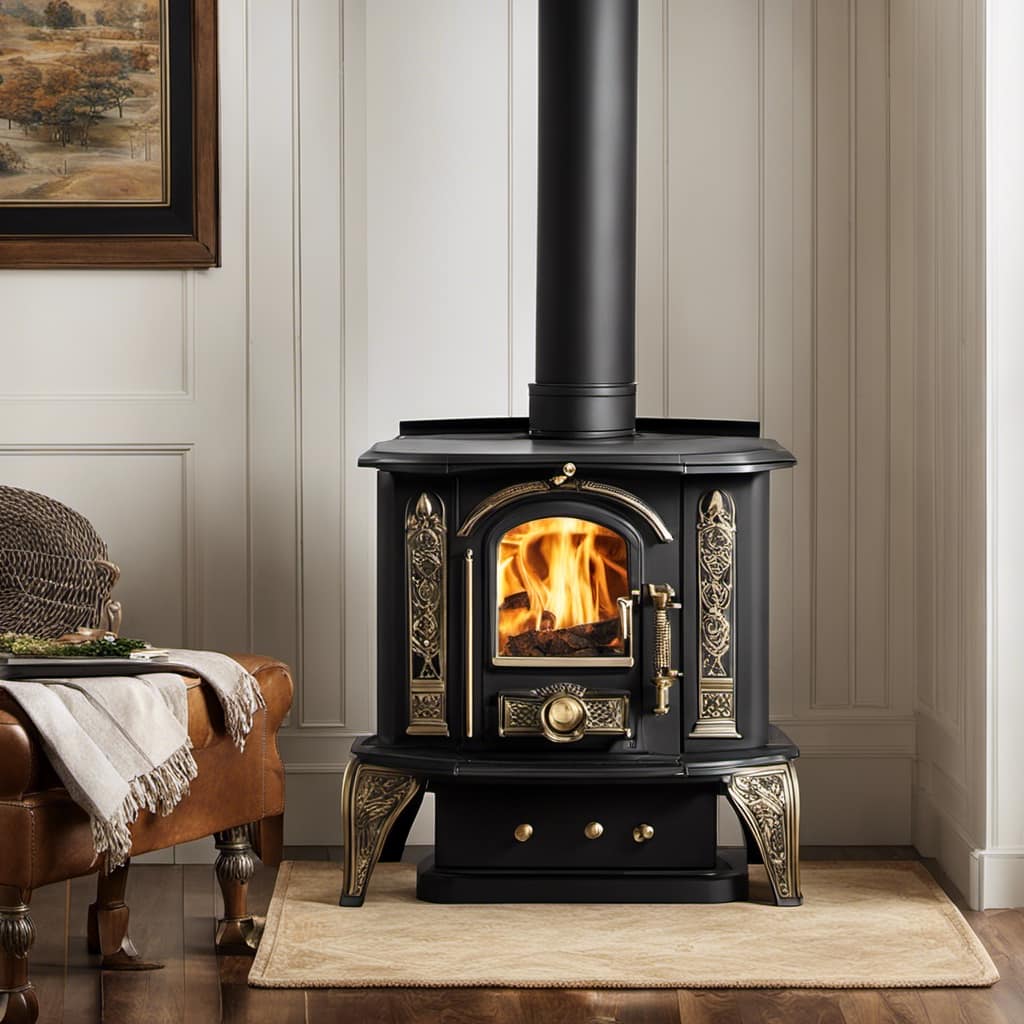
By following the steps outlined in this article, you can create a reliable and sustainable heating system that will keep your home warm during the colder months while reducing your reliance on fossil fuels.
Growing up surrounded by the vast beauty of nature, Sierra was always drawn to the call of the wild. While others sought the comfort of the familiar, she ventured out, embracing the unpredictable and finding stories in the heartbeat of nature.
At the epicenter of every remarkable venture lies a dynamic team—a fusion of diverse talents, visions, and passions. The essence of Best Small Wood Stoves is crafted and refined by such a trio: Sierra, Logan, and Terra. Their collective expertise has transformed the platform into a leading authority on small wood stoves, radiating warmth and knowledge in equal measure.


